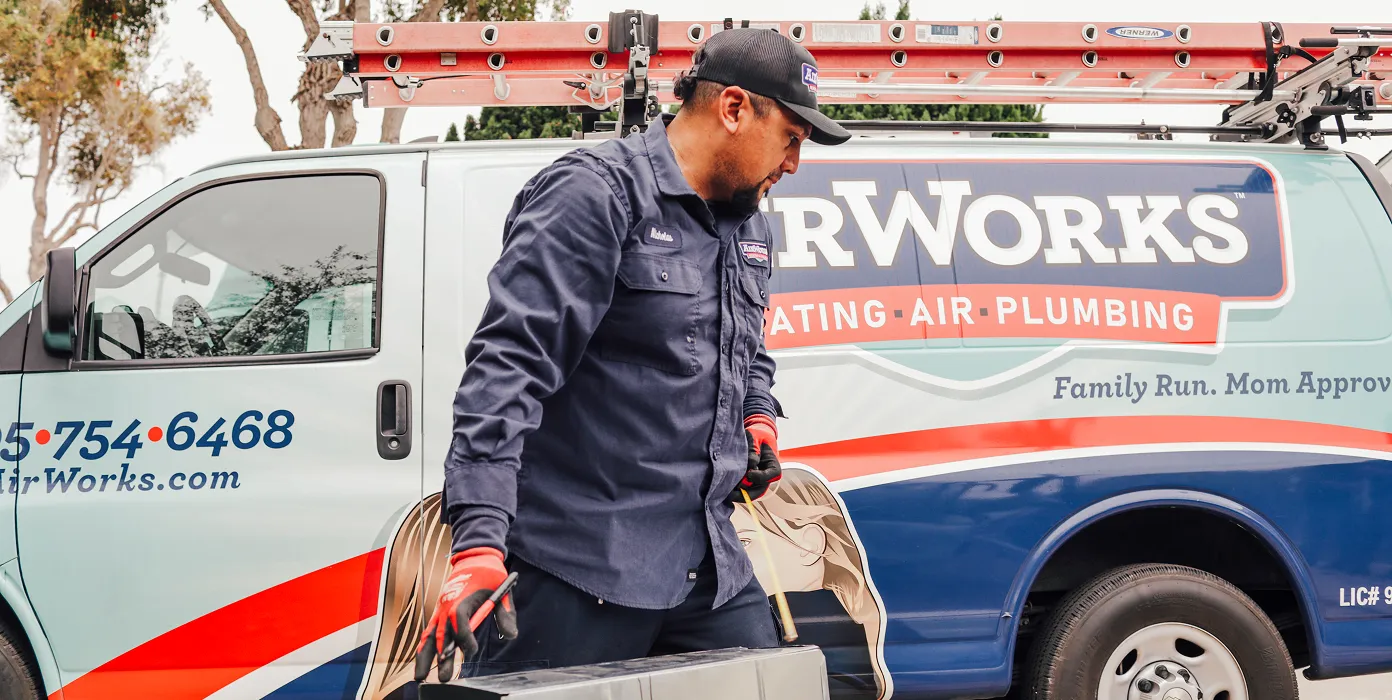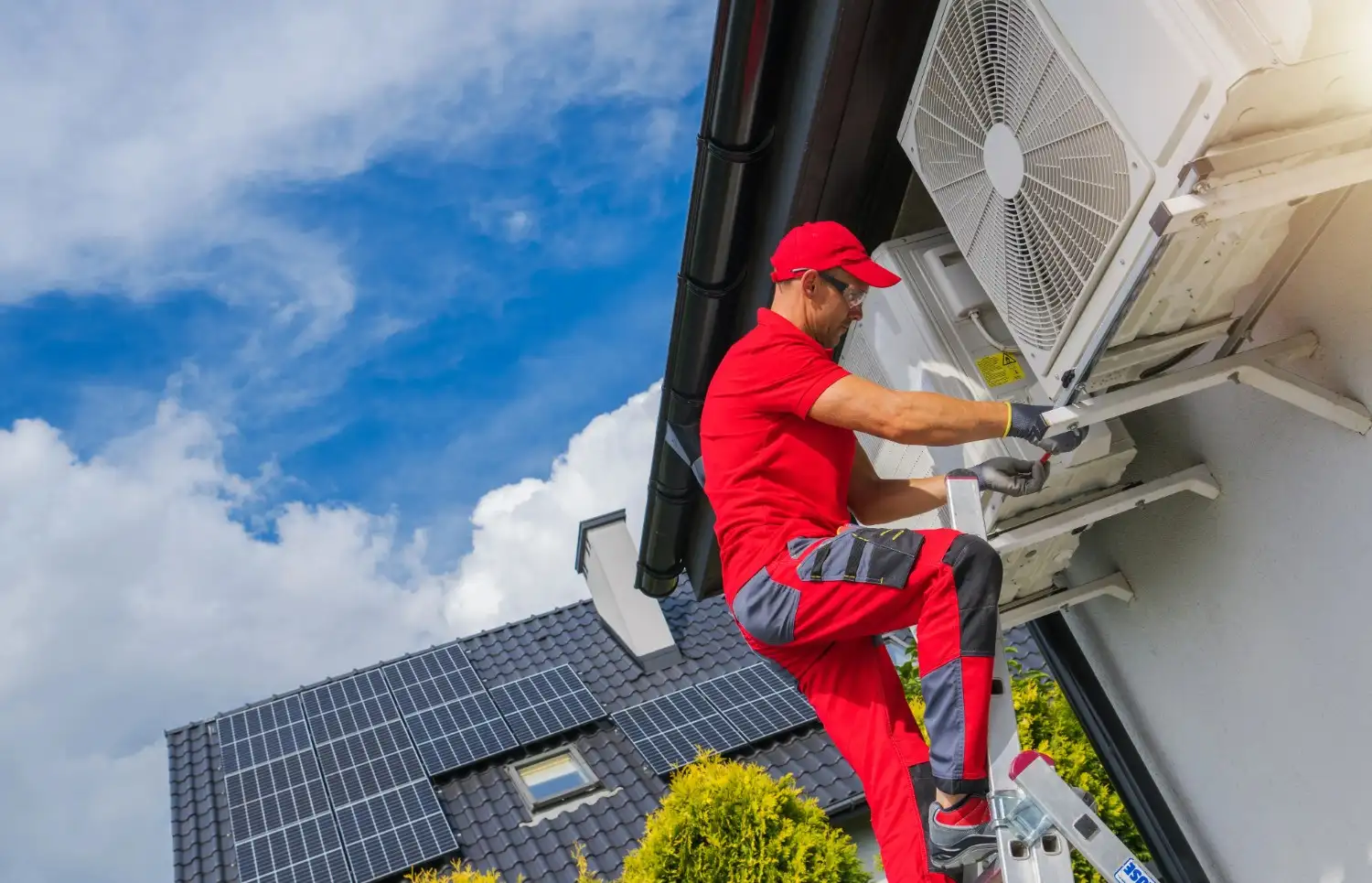Heat Pump Repair in Lake Sherwood, CA
Serving Ventura County & Sacramento

Heat Pump Repair in Lake Sherwood, CA
When your heat pump underperforms or stops working, it affects comfort, energy bills, and the enjoyment of Lake Sherwood living. Heat pumps are the year‑round backbone of many local homes—efficient for cooling during hot inland summer days and gentle heating when coastal nights turn cool. Heat Pump Repair in Lake Sherwood, CA focuses on fast, accurate diagnostics and repairs that restore reliable heating and cooling while protecting system lifespan and efficiency.
Why timely heat pump repair matters in Lake Sherwood
Lake Sherwood homeowners face a Mediterranean climate with warm, dry summers and cool evenings. That means heat pumps commonly run for both cooling and heating, and seasonal temperature swings plus wildfire smoke events increase the system’s workload. Delaying repairs can lead to:
- Higher energy bills from inefficient operation
- Increased wear and wider system damage (compressor and reversing valve failures)
- Poor indoor comfort and humidity control
- Indoor air quality problems when filters and coils are compromised
Prompt repair limits damage and often avoids full system replacement.

Common heat pump issues in Lake Sherwood homes
Here are the most frequent problems our diagnostics find in the area, with short explanations so you know what to expect:
Performance loss / weak heating or cooling
Caused by low refrigerant, dirty coils, obstructed airflow, or failing reversing valves. Symptoms include reduced airflow and rooms that never reach set temperature.
Refrigerant leaks
Low refrigerant reduces capacity and can damage compressors. Leaks often happen at fittings, coils, or line sets.
Compressor problems
Humming, frequent cycling, or no start. Compressors can fail from electrical issues, long-term refrigerant starvation, or age.
Reversing valve failures
Reversing valves control heat vs. cool mode; when stuck or leaking, you may get the wrong mode or no heat.
Electrical faults
Failed capacitors, contactors, bad wiring, or thermostat communication problems will cause intermittent operation or complete shutdown.
Defrost cycle and freeze-ups
Units in cooler evenings may ice over if sensors, defrost controls, or drain paths are malfunctioning.
Short cycling and frequent trips
Often from oversize systems, refrigerant issues, or electrical problems that cause strain and higher energy use.
Noisy operation or vibrations
Caused by loose mounts, failing motors, or compressor stress—especially noticeable in high-end or lakeside homes sensitive to noise.
What to expect from professional diagnostics
A reliable heat pump repair starts with a thorough diagnostic to pinpoint root causes rather than chasing symptoms. Typical diagnostic steps include:
- System performance check: Measure supply and return temperatures, airflow, and electrical draws to map how the system is performing under load.
- Refrigerant inspection: Check pressures and look for signs of leaks at coils, fittings, and line sets using electronic leak detectors.
- Electrical and controls testing: Inspect capacitors, contactors, relays, and thermostat communication. Verify safe voltage and current.
- Mechanical inspection: Examine compressors, reversing valves, fans, motors, and mounting hardware for wear or damage.
- Indoor and outdoor coil and airflow evaluation: Dirty coils, clogged filters, or obstructed condensate drains degrade performance and can cause icing or overheating.
- Operational cycle review: Test heat/cool switching, defrost operation, and run cycles to identify intermittent problems.
Diagnostics are focused on lasting repairs—if a quick fix won’t protect the system, technicians will recommend the correct repair path.
Typical repairs and solutions explained
Below are common repair actions and why they matter for reliable year‑round comfort:
- Refrigerant leak repair and recharge: Locate and repair leaks, then evacuate and recharge to manufacturer specifications. Proper sealing prevents future loss and protects the compressor.
- Compressor repair or replacement: If repairable, compressors are serviced for electrical and mechanical faults; otherwise, replacement is performed with proper system matching and charge.
- Reversing valve servicing: Repair or replace valves that fail to shift or leak refrigerant. Correct reversing valve function restores proper heating/cooling modes.
- Electrical troubleshooting and component replacement: Replace worn capacitors, contactors, relays, and failed wiring. Correct electrical faults reduce start‑up strain and protect major components.
- Fan and motor repairs: Fix or replace outdoor and indoor fan motors and blades to restore airflow and reduce noise.
- Coil cleaning and airflow restoration: Clean indoor and outdoor coils, replace clogged filters, and clear drains to improve heat exchange and efficiency.
- Control and thermostat calibration: Repair or replace thermostats and control boards to ensure accurate temperature control and reliable communication.
- Emergency repairs and temporary measures: For sudden failures—especially during extreme heat or smoke events—temporary fixes like bypass cooling or short‑term heating measures can protect comfort until permanent parts arrive.
Repair vs replacement — practical guidance
Deciding whether to repair or replace depends on age, repair cost relative to replacement, and system efficiency:
- Repair is cost‑effective for recent systems with a single failed component or minor refrigerant leaks.
- Replacement is often best for units older than 10–15 years with multiple failing components, repeated refrigerant leaks, or poor efficiency.
- Consider replacement sooner if rising energy bills, frequent breakdowns, or new efficiency incentives are a factor in Lake Sherwood’s energy market.
Extending life and preventing breakdowns — Lake Sherwood maintenance tips
Keeping your heat pump running smoothly is especially relevant here due to seasonal swings and wildfire risk:
- Replace or clean filters every 1–3 months depending on use and air quality.
- Schedule professional tune‑ups before cooling and heating seasons to check charge, electrical components, and defrost control.
- Keep 2–3 feet of clearance around the outdoor unit; trim landscaping and keep debris away.
- Protect outdoor equipment during wildfire season—regularly remove ash and consider higher‑MERV filtration when smoke is present.
- Install and maintain surge protection and ensure HVAC is on a dedicated circuit to reduce electrical failures during local power events.
Timely repairs and regular maintenance reduce the chance of emergency breakdowns and help maintain efficiency and comfort in Lake Sherwood homes. Heat Pump Repair Lake Sherwood, CA services combine focused diagnostics, experienced mechanical and electrical work, and emergency response options to restore reliable, efficient heating and cooling when you need it most.
Restore Comfort with Expert System Repairs
Fast, accurate repair is essential when your system stops working as expected. Through precise heat pump repair in Lake Sherwood, CA, homeowners can restore efficiency, prevent long-term damage, and avoid unnecessary replacement costs. Backed by years of hands-on expertise, AirWorks Solutions uses detailed diagnostics to identify the root cause—not just the symptoms—so your system runs like it should. Whether it’s an electrical fault, refrigerant issue, or a mechanical failure, our team provides clear guidance and trusted repairs tailored to your system.
Book your heat pump repair with AirWorks Solutions today and get dependable comfort back on track.


